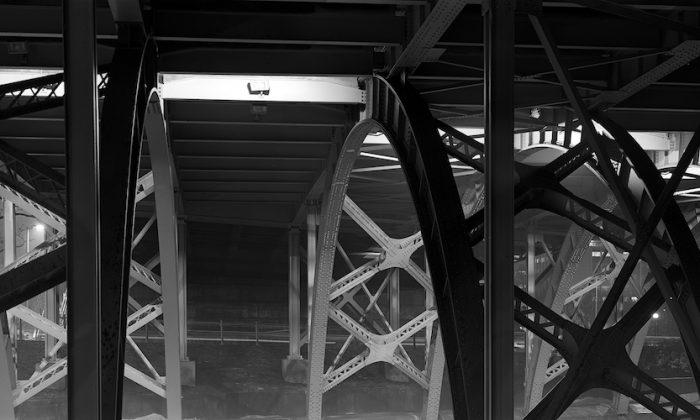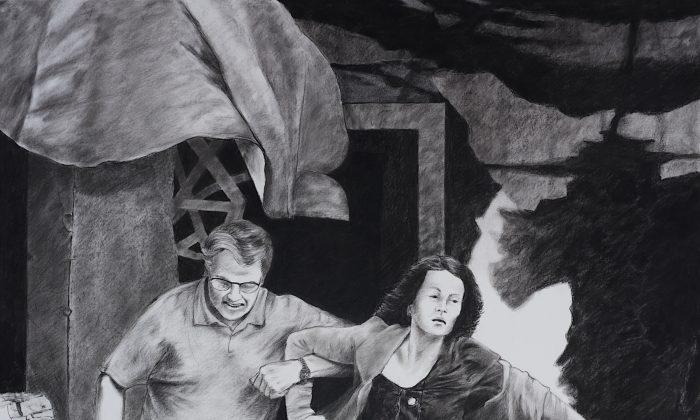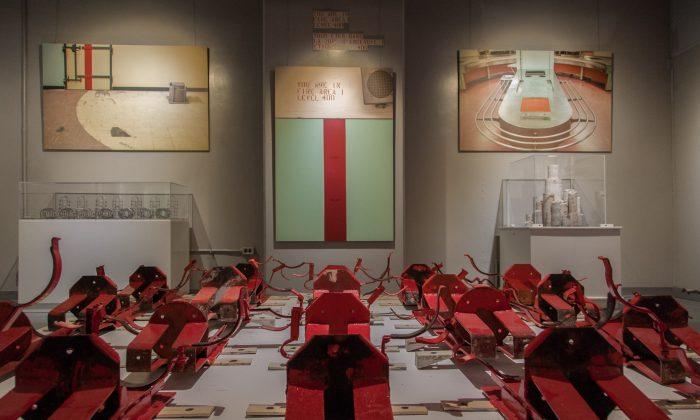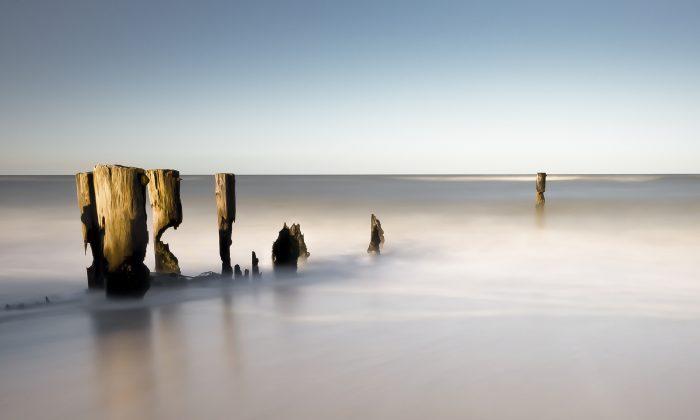Ottawa’s City Hall can be a noisy place. Located in the heart of the city, the building itself is a walk-through from Laurier Avenue to Lisgar Street–a courthouse on one side, a high school on the other.
But leave all that behind and walk into the city’s small gallery. “Home,” the current exhibition of David Barbour’s photographs, compels the visitor to forget the street outside, the errands left undone, and all the remaining tasks of the day. Here there is silence–meditative and visual.
On the walls of the gallery are displayed 32 black-and-white silver gelatin prints. Their subject matter is the nighttime street, their raison d’etre is silence, the content of stillness.
The photographs are all untitled, each one minimally identified only by the year its print was completed. Barbour began working on the series in 2002.
For more than 10 years, Barbour has walked the empty, late night streets of downtown Ottawa. All of the streets he has photographed are ones within walking distance of his home. In his walks, he has photographed what he sees–the city’s infrastructure of concrete sidewalks, bridges, walls, chain-link fences, empty parking garages, and barren trees.
There are no people in Barbour’s photographs. No one is sitting on a step or wrapped in litter, asleep under the bridge. It is winter. Snow and ice are visible. “Home” for the homeless is not here, not at this time of the year.
Nearly all Barbour’s quiet black-and-white compositions are careful arrangements of vertical and horizontal lines, still shadows in the snow. In one 2011 photograph we see an empty parking garage. The fluorescent lights on the ceiling lead the eye to a flat, empty wall at the back. A white supporting pillar, flanked by two other pillars, centres the foreground of the composition.
Look closer. On the white back wall are thin lines of black running down. Is it paint? Or the detritus of something worse? No way of knowing what happened here. No one is here to explain.
Barbour’s use of centred foreground imagery is exemplary. In his photographs, the eye does not leap to the composition’s focal point to “get the picture.” There are patterns and proportions to consider. We take time to see them.
Sometimes the centred object produces two related but independent compositions. For example, in another photograph from 2011, one’s eye is drawn to the sharp-edged corner of a high concrete wall on the left. Alongside the wall’s further side is an empty city street. A silhouetted tree trunk stands in the middle of the foreground.
To see the street, we are compelled to look around the tree, not at the tree. The tree divides the photograph into two separated compositions–wall and street.
A 2011 photograph of a snow-covered field marked by a bare tree trunk in the middle of the foreground is similarly bifurcated. On its right, a field of many pools of light; on the left, no more than two or three.
Only two of Barbour’s photographs are compositions built on curved lines. One is a 2004 shot of metal supporting arches under a bridge. A “No Entry” traffic sign is visible on the building to the back. The second is a 2013 photograph showing a wall of graffiti entangled by a bare tree in front of it.
Barbour’s use of large format film cameras–a 6X12 Toyo field camera and a Linhof panorama camera–is one time-weighted factor in his work. However, another is as important: he has printed all the imagery to the same size–h.38cm x 76cm–or, a ratio of 1:2. This is a proportion Japanese artists and designers have used for centuries to quiet the composition, but one almost never seen in Western art.
The result is clear. In “Home,” we not only see Barbour’s technical expertise in film photography and composition, we see more. In Barbour’s photographs, time itself is suspended in the quiet of night.
David Barbour will be appearing in person at Artist Talk on Sunday, Jan. 12 at 2 p.m. at City Hall Art Gallery, 110 Laurier Avenue West.
Maureen Korp PhD is an independent scholar, curator, and writer who lives in Ottawa. Author of many publications, she has lectured in Asia, Europe, and North America on the histories of art and religions. Email: [email protected]






Friends Read Free